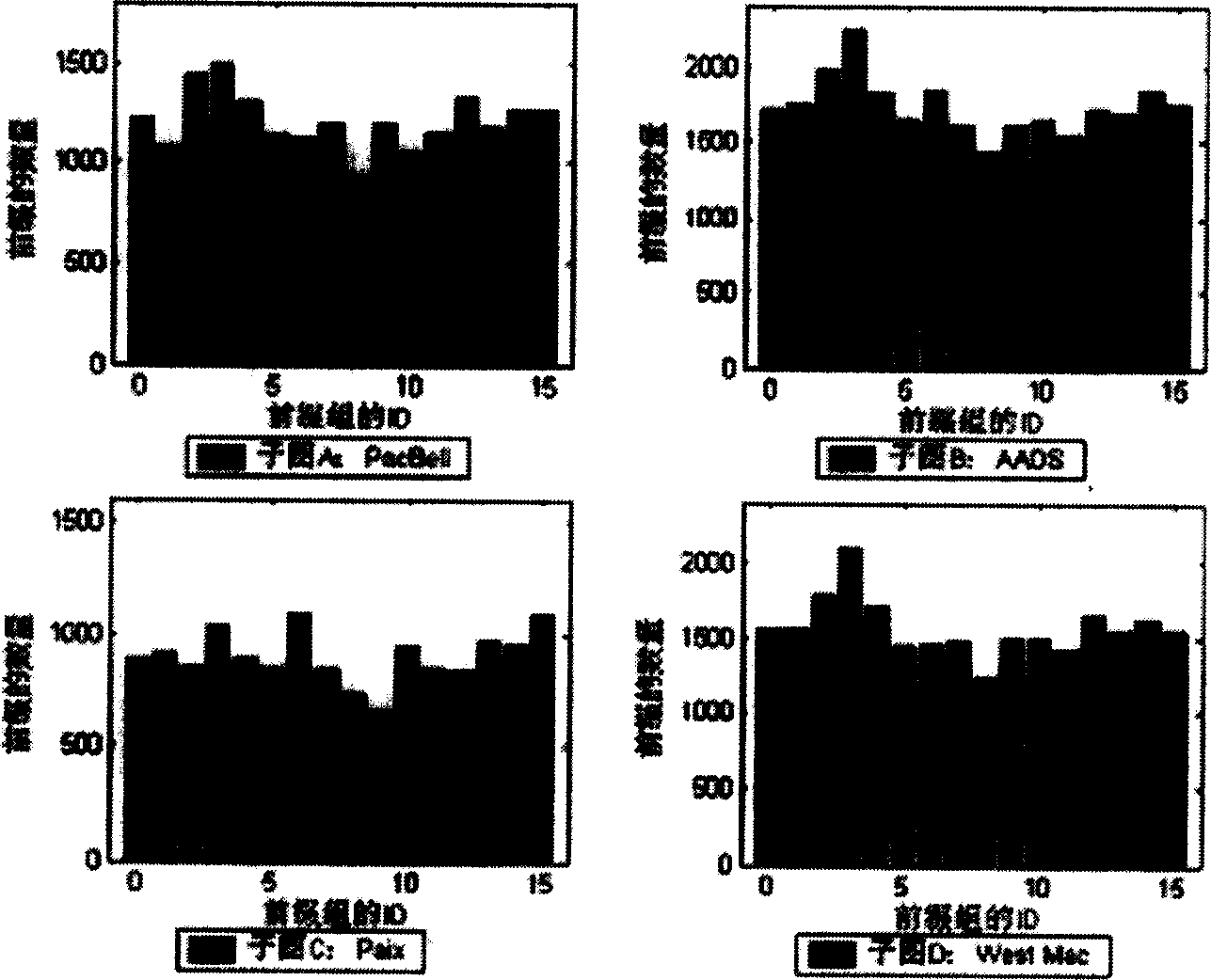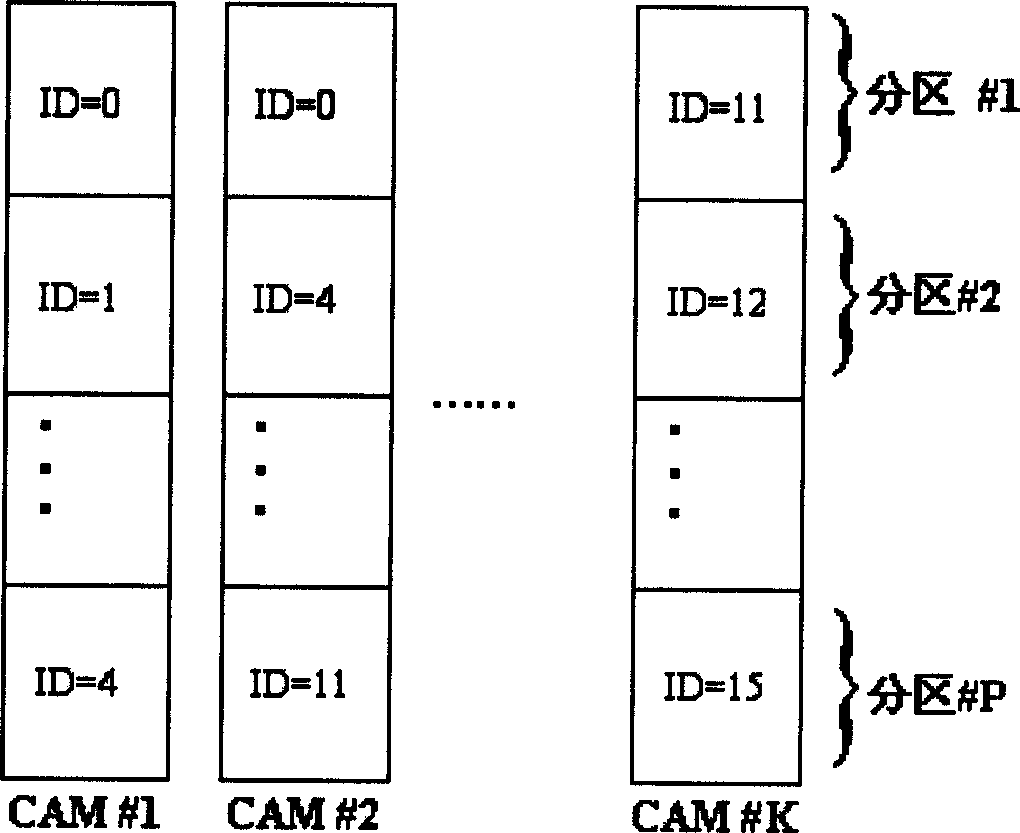Distributed paralled IP route searching method based on TCAM
An IP routing and distributed technology, applied in the field of computer networks, can solve the problems of high power consumption and price, not meeting the requirements of line card processing speed, and the capacity of TCAM cannot be very high.
- Summary
- Abstract
- Description
- Claims
- Application Information
AI Technical Summary
Problems solved by technology
Method used
Image
Examples
Embodiment Construction
[0050] The routing and forwarding table is generated mainly based on the original routing prefix and the frequency at which the prefix is searched. Under the given number of TCAM chips and the number of partitions for each chip, it is obtained: which entries should be placed in which TCAM chip, which Table entries should be stored multiple times (redundancy). What he needs to optimize is to make the prefix entries evenly distributed in multiple TCAMs as much as possible, and at the same time, the access frequency (traffic intensity) corresponding to the prefix entries should also be evenly distributed in these TCAMs. We have shown that this optimization problem is actually an NP-hard problem. We will give a better approximation algorithm later.
[0051] If we want to allocate in units of one prefix, then the amount of calculation required is too large. A typical routing table contains 1 to 1 million prefixes; at the same time, we also need to record the results of the alloc...
PUM
 Login to View More
Login to View More Abstract
Description
Claims
Application Information
 Login to View More
Login to View More - R&D
- Intellectual Property
- Life Sciences
- Materials
- Tech Scout
- Unparalleled Data Quality
- Higher Quality Content
- 60% Fewer Hallucinations
Browse by: Latest US Patents, China's latest patents, Technical Efficacy Thesaurus, Application Domain, Technology Topic, Popular Technical Reports.
© 2025 PatSnap. All rights reserved.Legal|Privacy policy|Modern Slavery Act Transparency Statement|Sitemap|About US| Contact US: help@patsnap.com



